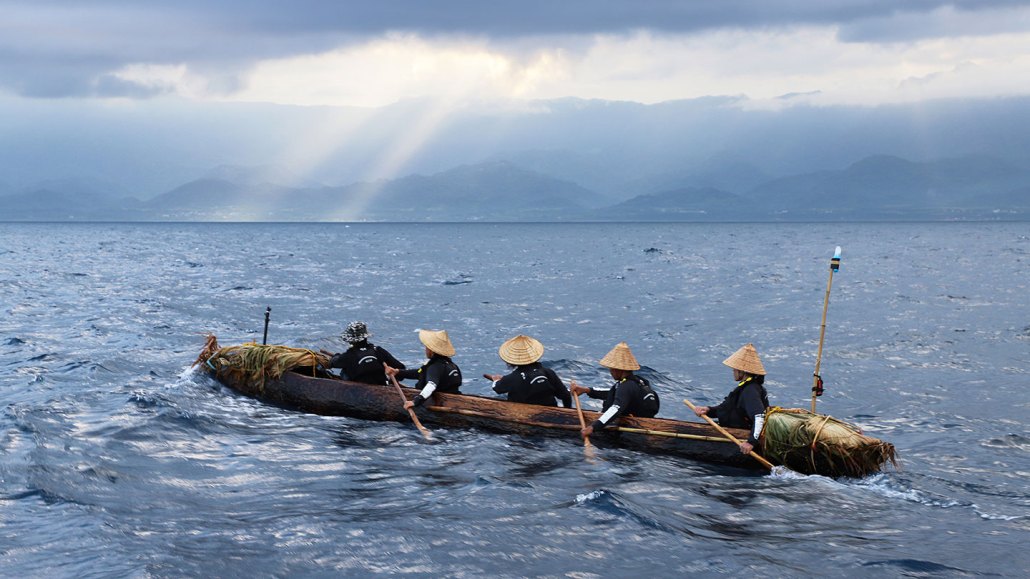Ancient humans may have deliberately voyaged to Japan’s Ryukyu Islands
Satellite-tracked buoys suggest there’s little chance the remote isles were reached by accident

A dugout canoe (shown) crafted using stone axes modeled off of ancient Japanese artifacts successfully traveled more than 200 kilometers from Taiwan to Japan’s Ryukyu archipelago in 2019.
Y. Kaifu
- More than 2 years ago
Long ago, ancient mariners successfully navigated a perilous ocean journey to arrive at Japan’s Ryukyu Islands, a new study suggests.
Archaeological sites on six of these isles — part of a 1,200-kilometer-long chain — indicate that migrations to the islands occurred 35,000 to 30,000 years ago, both from the south via Taiwan and from the north via the Japanese island of Kyushu.
But whether ancient humans navigated there on purpose or drifted there by accident on the Kuroshio ocean current, one of the world’s largest and strongest currents, is unclear. The answer to that question could shed light on the proficiency of these Stone Age humans as mariners and their mental capabilities overall.
Now, satellite-tracked buoys that simulated wayward rafts suggest that there’s little chance that the seafarers reached the isles by accident.
Researchers analyzed 138 buoys that were released near or passed by Taiwan and the Philippine island Luzon from 1989 to 2017, deployed as part of the Global Drifter Program to map surface ocean currents worldwide. In findings published online December 3 in Scientific Reports, the team found that only four of the buoys came within 20 kilometers of any of the Ryukyu Islands, and these did so only as a result of typhoons and other adverse weather.
It is unlikely that ancient mariners would have set out on an ocean voyage with a major storm on the horizon, say paleoanthropologist Yousuke Kaifu of the University of Tokyo and colleagues. As a result, the new findings indicate that the Kuroshio current would have forced drifters away from rather than toward the Ryukyu Islands, suggesting that anyone who made the crossing did so intentionally instead of accidentally, Kaifu says.
Geologic records suggest that currents in the region have remained stable for at least the past 100,000 years. So it’s reasonable to conclude that these buoys mimic how well ancient watercraft set adrift in the same area might have fared, the researchers say.
“From a navigation perspective, crossing to the Ryukyus was so challenging that accidental-drift models are unlikely to provide an effective explanation,” agrees archaeologist Thomas Leppard of Florida State University in Tallahassee, who was not involved in the research. This new work “is, of course, not conclusive, but it is suggestive.”
Stone tools and butchered remains of a rhinoceros suggest archaic human lineages such as Homo erectus may have similarly crossed seas at least 709,000 years ago. And artifacts found in Australia suggest modern humans may have begun voyaging across the ocean at least 65,000 years ago (SN: 7/19/17). But it remains hotly debated whether humans’ ocean journeys during the Paleolithic, which lasted from roughly 2.6 million years ago to about 11,700 years ago, were generally made accidentally or intentionally.
Other data do suggest that ancient humans could have deliberately made the voyage to the Ryukyu Islands. In 2019, a team of adventurers succeeded in paddling more than 200 kilometers from Taiwan to Yonaguni in the archipelago using a dugout canoe that Kaifu and his colleagues made using stone axes modeled off Japanese Paleolithic artifacts.
Although the people of the Paleolithic are often perceived as primitive and conservative in their goals, “I feel something very different from the evidence of human presence on these remote islands,” Kaifu says.







